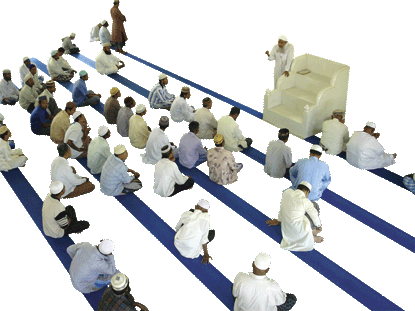A Seat at the Table
In addition to greater international attention on their plight in exile, Thailand’s growing community of Burmese Muslims wants a voice in the political future of their country.
In October 2005 report documenting the Burmese junta’s steady assault on its Muslim minority, titled “Myanmar’s [Burma’s] Muslims: Oppressed of the Oppressed,” draws the following conclusion: “Caught between non-recognition as victims of religious hatred and violence by those countries who have brought sanction against Myanmar, and ignored by supposed co-religionist governments who have gone so far as to support the junta, even with arms, the Muslims of Myanmar hold the unenviable position of being oppressed even in some cases by the oppressed.”
Released by the UK-based Islamic Human Rights Commission, the report focuses primarily on the Muslim Rohingyas of Arakan State, who have fled oppression in the hundreds of thousands across the country’s western border with Bangladesh. Junta aggression in Karen and Mon states, however, has also produced significant Muslim refugee populations, as whole communities have fled across the Thai-Burma border to Mae Sot.

Rahimabi, a 69-year-old mother of 11, was among them. Originally from Kyeikmayaw Township in Burma’s Mon State, Rahimabi fled Burma with her children in 1984, after the Burmese army attacked the Karen National Union-controlled village of Wandakian. Led by local Muslim leader Haji Yusof, Rahimabi and the rest of the village’s Muslim community resettled in Mae Sot.
Saw Hla, 96, fled Burma after the 1988 democracy uprising, in which two of her sons were arrested on charges of robbery and arson. The eldest later died in a prison labor camp. Saw Hla came of age in the waning years of British colonial rule in Burma and recalled that life at that time for Burmese Muslims was good.
She witnessed the long succession of regimes in Burma: the Japanese occupation during World War II, the fledgling independence government of the Anti-Fascist People’s Freedom League, Gen Ne Win’s regime, and finally the country’s current crop of military despots.
“This government is the worst,” said Saw Hla. “We were abandoned and betrayed.” She now lives in an area of Mae Sot known as the Bangladeshi Barracks, one of several predominantly Muslim neighborhoods. Her remaining sons work as city garbage collectors.
The Bangladeshi Barracks, a warren of narrow alleyways lined by dilapidated house fronts, circumnavigates the Bangalawalay Mosque, one of three mosques in Mae Sot. The Barracks derives its name from a wealthy Bangladeshi businessman, who bequeathed the land to the mosque to provide housing for Burmese Muslim immigrants.
Life in the Barracks and its environs revolves around the activities of the mosque. The men attend to their daily prayers—women are forbidden to enter the mosques and must make their devotions at home—and children study at the mosque school, a poorly funded affair that survives principally on rent collected from residents of the Barracks.
According to Adisak Asmimana, a local Thai Muslim and a former election commissioner for Tak Province, some 30,000 Burmese Muslims live in border refugee camps. About 8,000 live in Mae La camp just outside Mae Sot. Restrictions on mobility and employment, among other things, make the refugee camps an unwelcome option for many in Mae Sot’s Muslim community.
Hasan, a 24-year-old migrant worker, lives in a crowded apartment complex adjacent to the Bangladeshi Barracks with his wife and newborn daughter. “I did not want to live in the camp,” he said. “I have many friends there, but I would rather work so I can support my family.”
He carries a UNHCR refugee registration card and has waited for nearly 3 years to be resettled in a third country. He visits the local office every month to check the status of his application. “I hope to go to the United States.”
That hope is common enough among Burmese Muslims, particularly with young people, some of whom have lived most or all of their lives on Thai soil. Though they speak Burmese, they have no memory of life in Burma.
Thailand has struggled for years—with varying degrees of success—to accommodate the steady stream of Burmese refugees across its western border. As with other ethnic minorities, Burmese Muslims have received a mixed reception.
Ekachai Nitibhumikun, a Thai Muslim lawyer in Mae Sot and an Executive Committee member of Masjit noor-ul-Islam mosque, suggested that Thai Muslims are of two minds about their Burmese co-religionists. “There are two groups of Thai Muslims,” he said. “One sees the Burmese as a burden.
1 | 2 | 3 next page »
